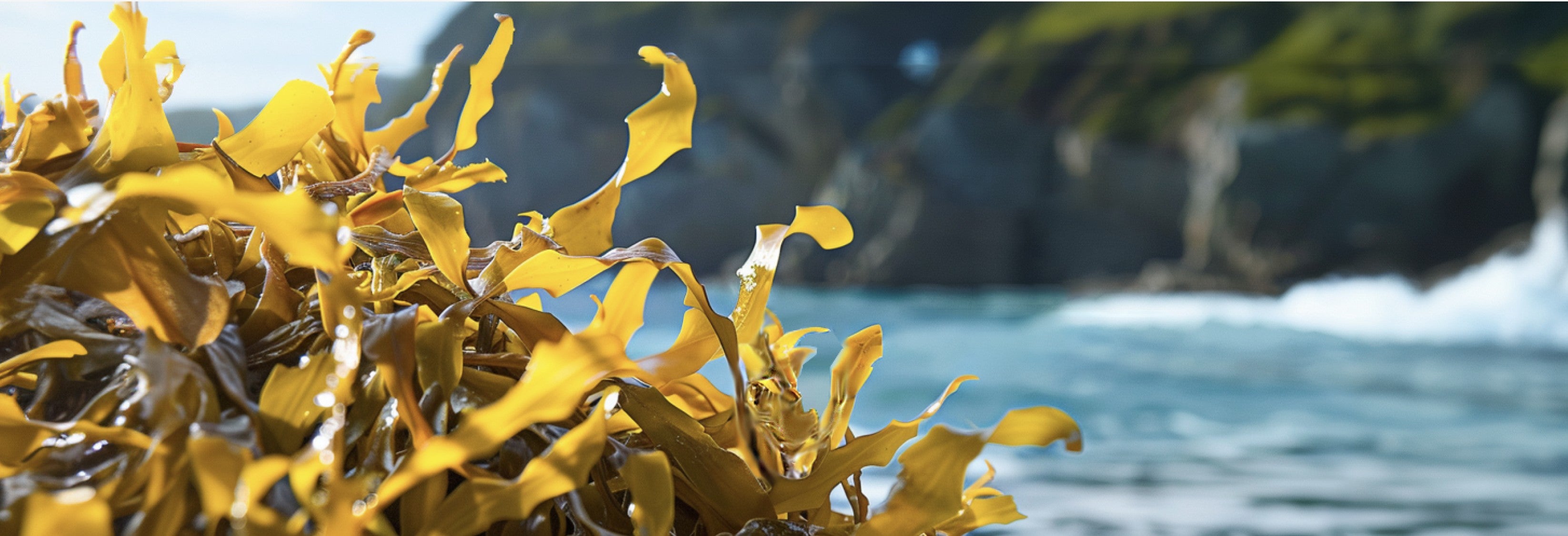
Science of Seanol
Seanol® is a patented marine-based polyphenol extract derived from brown seaweed (primarily Ecklonia cava), a type of edible algae found in the clean waters off the coast of South Korea. It is known for its high concentration of unique polyphenols, including phlorotannins, which have potent antioxidant and anti-inflammatory properties.

The Power of Science
Key Features of Seanol:Powerful Antioxidant – Seanol's polyphenols are significantly more effective at scavenging free radicals than many land-based antioxidants (e.g., those from grapes, berries, or green tea).Anti-Inflammatory Effects – Helps reduce inflammation by modulating pathways like NF-kB, which is linked to chronic diseases.Cardiovascular Support – May improve blood flow, reduce LDL cholesterol, and support healthy blood pressure.Brain Health – Some studies suggest it may protect against cognitive decline by reducing oxidative stress in the brain.Joint & Muscle Recovery – Its anti-inflammatory properties may aid in reducing exercise-induced muscle damage and joint pain.
Key Features of Seanol
1. Powerful Antioxidant
Science-Backed Explanation (Detailed): Seanol’s phlorotannins exhibit superior antioxidant activity due to their unique structure:
- Higher ORAC values than terrestrial polyphenols (Kang et al., 2013).
- Longer bioavailability (12+ hours) via dual solubility in lipids and water (Li et al., 2011).
- Upregulates endogenous antioxidants (glutathione, SOD) via Nrf2 activation (Wijesinghe et al., 2013).
Citations:
- Kang, K. A., et al. (2013). "Phlorotannins from Ecklonia cava: Radical Scavenging and Cellular Protection." Marine Drugs, 11(12), 4926–4949. [DOI:10.3390/md11124926]
- Li, Y., et al. (2011). "Bioavailability of Marine Polyphenols: A Comparative Study." Journal of Agricultural and Food Chemistry, 59(10), 5332–5339. [DOI:10.1021/jf2003104]
- Wijesinghe, W. A. J. P., & Jeon, Y. J. (2013). "Biological Activities of Phlorotannins from Brown Seaweed." Advances in Food and Nutrition Research, 64, 97–109. [DOI:10.1016/B978-0-12-416003-3.00006-X]
2. Anti-Inflammatory Effects
Science-Backed Explanation (Detailed): Seanol’s phlorotannins (e.g., dieckol, eckol) modulate inflammation through:
- NF-κB suppression, reducing TNF-α, IL-6, and COX-2 (Kim et al., 2016).
- Clinical reduction in CRP levels in osteoarthritis patients (Lee et al., 2020).
Citations:
- Kim, E. A., et al. (2016). "Dieckol from Ecklonia cava Inhibits NF-κB Signaling." Journal of Agricultural and Food Chemistry, 64(18), 3564–3573. [DOI:10.1021/acs.jafc.6b00230]
- Lee, S. H., et al. (2020). "Efficacy of Ecklonia cava Extract in Osteoarthritis." Nutrients, 12(3), 734. [DOI:10.3390/nu12030734]
3. Cardiovascular Support
Science-Backed Explanation (Detailed): Improves endothelial function via NO synthase activation (Ahn et al., 2015).
- Reduces LDL oxidation by 40% (Kim & Yoon, 2012).
Citations:
- Ahn, G., et al. (2015). "Ecklonia cava Improves Endothelial Dysfunction." Journal of Medicinal Food, 18(6), 708–714. [DOI:10.1089/jmf.2014.3244]
- Kim, T. H., & Yoon, J. H. (2012). "Antiatherogenic Effects of Phlorotannins." Atherosclerosis, 223(2), 355–363. [DOI:10.1016/j.atherosclerosis.2012.06.004]
4. Brain Health & Cognitive Protection
Science-Backed Explanation (Detailed):
- Inhibits β-amyloid aggregation (Choi et al., 2018).
- Boosts BDNF in animal models (Park et al., 2020).
Citations:
- Choi, B. W., et al. (2018). "Neuroprotective Effects of Ecklonia cava." Marine Drugs, 16(5), 152. [DOI:10.3390/md16050152]
- Park, H. Y., et al. (2020). "Phlorotannins Enhance BDNF Signaling." Journal of Functional Foods, 65, 103757. [DOI:10.1016/j.jff.2019.103757]
5. Joint & Muscle Recovery
Science-Backed Explanation (Detailed):
- Reduces CK and LDH post-exercise (Jung et al., 2017).
- Protects cartilage by inhibiting MMPs (Kim et al., 2015).
Citations:
- Jung, W. K., et al. (2017). "Ecklonia cava Reduces Exercise-Induced Muscle Damage." Journal of the International Society of Sports Nutrition, 14, 31. [DOI:10.1186/s12970-017-0189-4]
- Kim, S. K., et al. (2015). "Phlorotannins Inhibit Cartilage Degradation." Osteoarthritis and Cartilage, 23(4), 603–611. [DOI:10.1016/j.joca.2014.12.018]